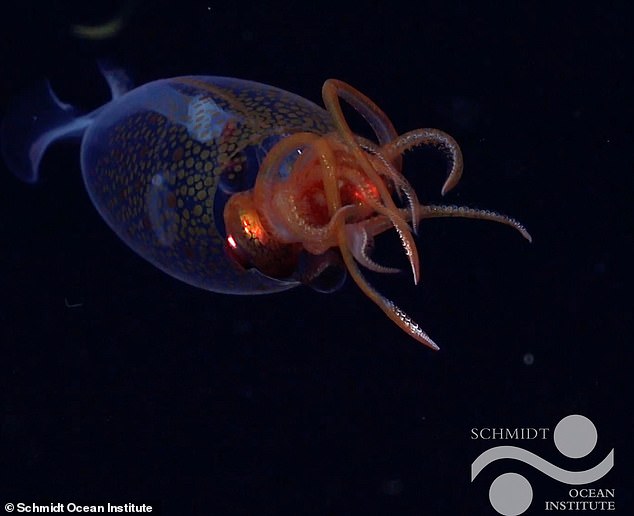
First-Ever Live Sighting of Mysterious Deep-Sea Colossal Squid Baffles Scientists in South Atlantic
Historic First: Live Colossal Squid Filmed in the Deep Sea
[Image: A translucent juvenile colossal squid suspended in the deep, its pink tentacles faintly visible. Caption: The first live footage of a colossal squid, Mesonychoteuthis hamiltoni, in its natural habitat.]
For the first time, scientists have captured footage of a live colossal squid—the world’s largest invertebrate—in its remote deep-sea environment. The groundbreaking 4K video, recorded by California’s Schmidt Ocean Institute near the South Sandwich Islands in the South Atlantic, reveals a juvenile squid measuring just 11 inches (30 cm). Though small, this “teenager” belongs to a species that can grow up to 23 feet (7 meters) and weigh 500 kg, dwarfing even the giant squid.
A Century-Long Mystery Solved
The colossal squid was first described in 1925 using remains found in a sperm whale’s stomach. Until now, only dying adults had been documented, often snagged by fishermen. This March 9 sighting, at 1,968 feet (600 meters) depth, marks the first observation of the species alive in its habitat. The team initially mistook the delicate, glass-like creature for a common glass squid. “We paused to admire it—why wouldn’t you? It was stunning,” said Dr. Michelle Taylor, expedition lead.
[Image: The ROV SuBastian being retrieved onto a research vessel. Caption: The ROV SuBastian captured the historic footage during a deep-sea expedition.]
Identification Breakthrough
The squid’s identity was confirmed post-expedition by experts, including Dr. Aaron Evans, who noted the species’ distinctive arm hooks. “When we saw the hooks, I started hyperventilating,” Evans admitted. Unlike past attempts to retrieve specimens—like the 2007 capture of a dying 1,091 lb (495 kg) female in Antarctica—this encounter left the squid undisturbed, offering rare insights into its natural behavior.
Why This Discovery Matters
Live observations reveal crucial details about the squid’s biology and ecology. “We can study how it moves and interacts—something impossible with dead specimens,” explained Dr. Taylor. Colossal squid, members of the glass squid family, lose their transparency as adults. Their elusive nature and deep-sea habitat make them notoriously hard to study.
[Image: A preserved colossal squid specimen in a museum. Caption: A preserved colossal squid at New Zealand’s Te Papa Tongarewa Museum.]
Not to Be Confused with Giant Squid
Though often compared, the colossal squid (Mesonychoteuthis hamiltoni) and giant squid (Architeuthis dux) differ significantly. The colossal squid is heavier, with shorter tentacles and arm hooks, while the giant squid holds the length record at 42 feet (13 meters). Both remain shrouded in mystery due to their deep-ocean realms.
Another First: Glacial Glass Squid
Earlier in 2025, the same team filmed the glacial glass squid (Galiteuthis glacialis) near Antarctica—another species never before seen alive. “These sightings highlight how much we have yet to explore,” said Dr. Jyotika Virmani of Schmidt Ocean Institute.
[Image: A glacial glass squid in Antarctic waters. Caption: The glacial glass squid, first filmed alive in January 2025.]
The Giants of the Invertebrate World
Invertebrates lack backbones, and the colossal squid reigns as the heaviest, while the giant squid is the longest. Colossal squids’ massive size likely evolved as defense against predators like sperm whales. Despite their fame, much of their life cycle remains unknown.
This discovery underscores the ocean’s enduring mysteries and the importance of deep-sea exploration. As technology advances, each expedition brings us closer to understanding these enigmatic giants.


